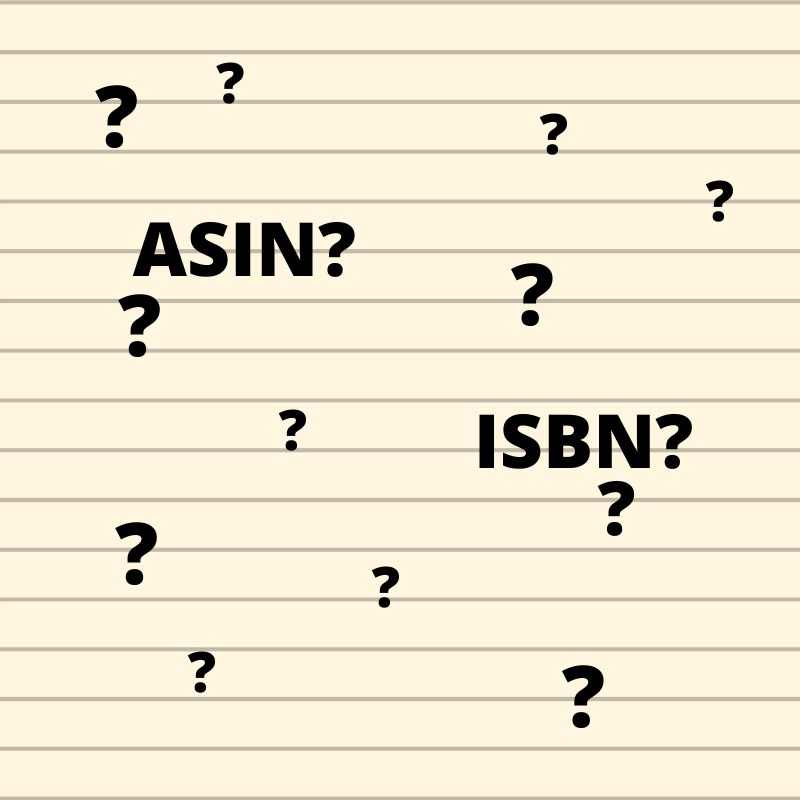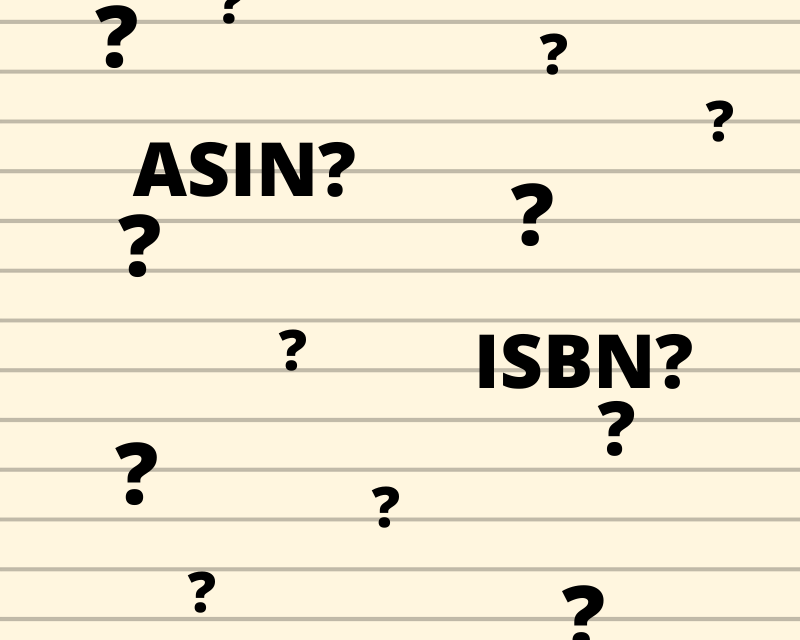
Did you know?
An ASIN is not the same thing as an ISBN.
I’m talking about identification numbers for book publishing. An ISBN (international standard book number) is that long number you see in the barcode on the back of a book. It identifies a specific title or edition of that title from one specific publisher. Why is this important? It makes bookselling more efficient for bookstores, wholesalers, distributors, libraries and universities. It eliminates confusion when there are multiple books with the same title, or multiple published versions of the same title (like when your child needs the Folger Shakespeare Library version of Macbeth rather than the Dover Thrift version).
The ASIN (Amazon standard identification number) also identifies a specific title, but with a major difference: it only allows the published work to be sold by Amazon. Even with an eBook, this is restrictive, because it means the eBook can only be read on a Kindle, not on applebooks or B&N’s Nook. KDP (Kindle Direct Publishing) is the self-publishing arm of Amazon, formerly known as CreateSpace. Authors publishing print versions of their work through KDP are offered the option of choosing a free ASIN or a free ISBN, as well as bringing his or her own purchased ISBN. But don’t be fooled: nothing’s free! When an author chooses to use the free ISBN, thinking that will enable him to sell his book in a brick-and-mortar bookstore, he will find he can’t. According to KDP’s website, the free ISBN “can only be used on KDP for distribution to Amazon and its distributors. It cannot be used with another publisher or self-publishing service.” This means that not only will a book be restricted in its sales (remember—Amazon only holds 45% of book sales in the US), it will also be restricted by who can publish it. If a self-published author is “discovered” by a publishing company who wants to sell his book, he will find that his free ISBN restricts him from signing with that publisher.
Another downside to the free Amazon ISBN is that the “publisher” field on the title detail page will read “independently published.” For those of us with our own independent publishing imprint, this means our imprint won’t be shown or mentioned in the title details. And since the title details of a book are specific to the ISBN, that means the title is forever stamped as a self-published work, which still has an amateur flavor to the average reader.
Does this really matter?
It may or it may not, depending on the author’s intentions. An ISBN can only be purchased through the official ISBN registration agency (Bowker in the United States), and the price is $125 per number, with discounts for buying in multiples of 10 or 100. Each edition of a title requires its own ISBN; you need one for an eBook and a second one for paperback. There are print on demand companies, like Ingramspark, who offer ISBN’s at a reduced rate ($85 per number through Ingramspark, including barcode) because they buy in bulk, but it is still an official Bowker ISBN with no restrictions on use. If an author just wants to see his name in print and only intends to sell to a limited audience, or wants to give his work away for free, then the free ISBN or ASIN is probably the best option. Even with the free number, an author is still able to buy print books wholesale from Amazon to sell on his own (at speaking engagements, for instance). If an author wants the opportunity of selling his book in bookstores or libraries, however, that free ISBN will prevent it. And if he has the aspirations of touting that self-published book to a publishing company, he is better off making that ISBN investment.
So weigh your options, and don’t be taken in by the cheap and easy! Read the fine print, because “free” almost always has expensive strings attached!
Need help navigating the ins and outs of independent publishing? We are ready to answer your questions.

